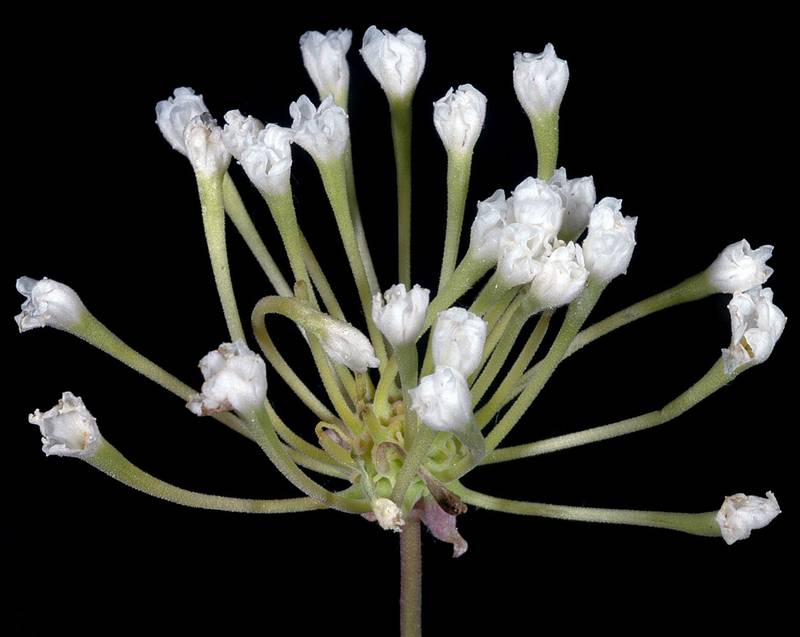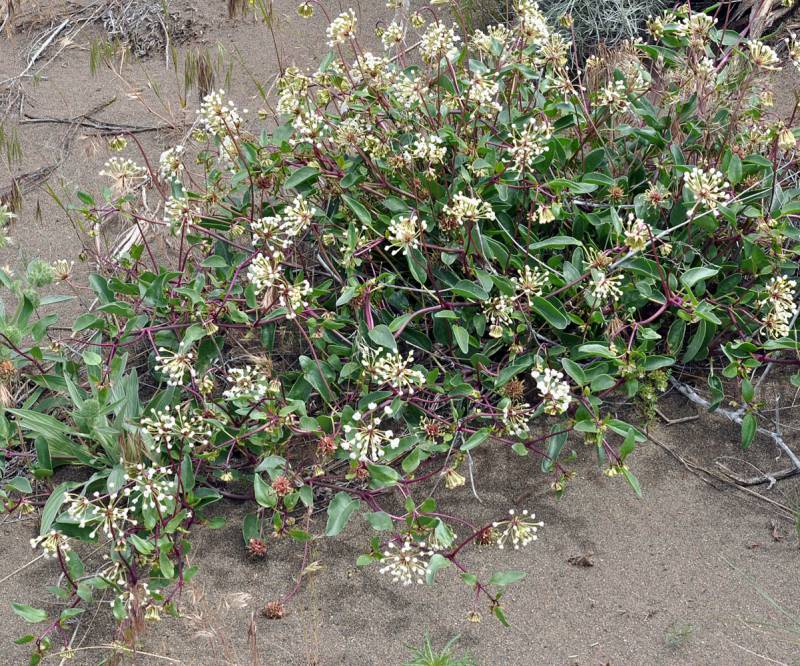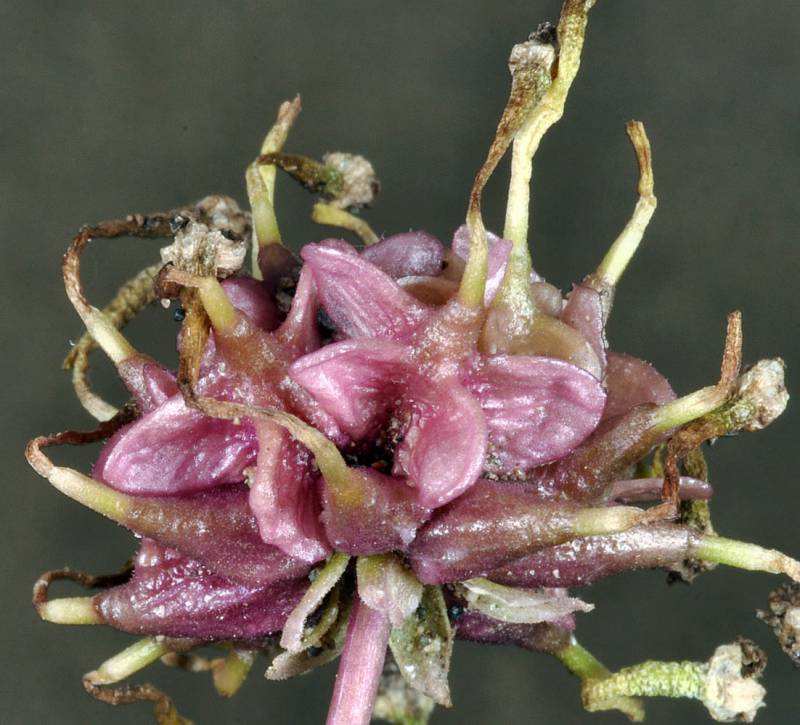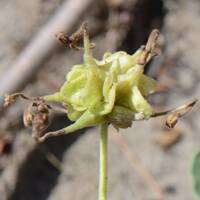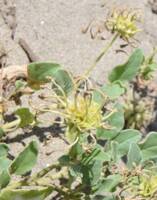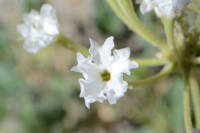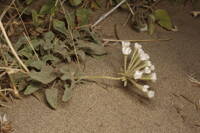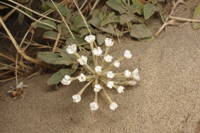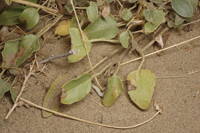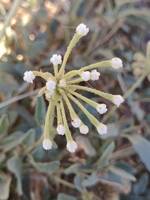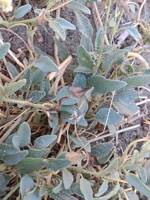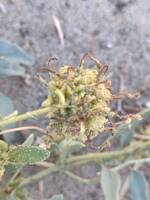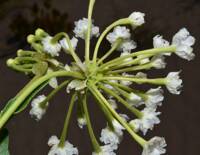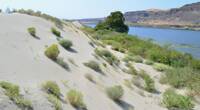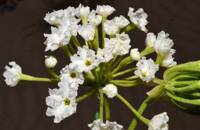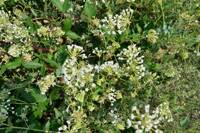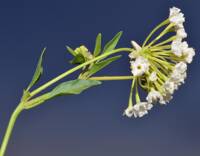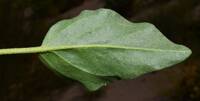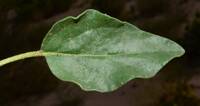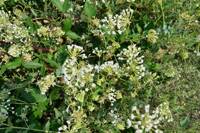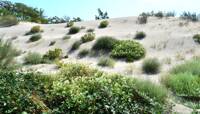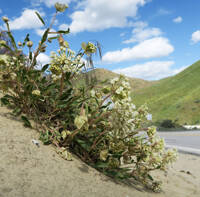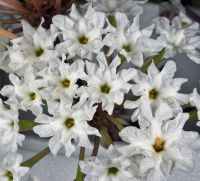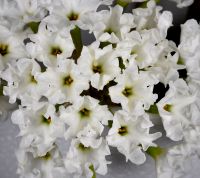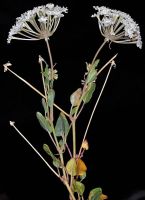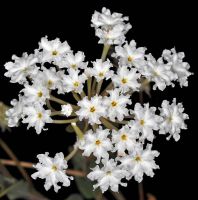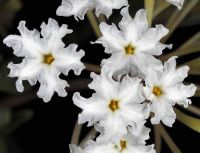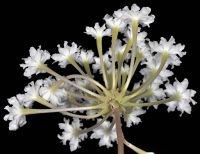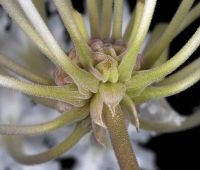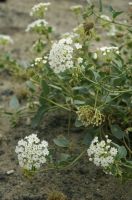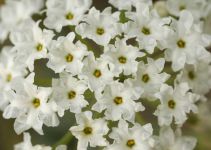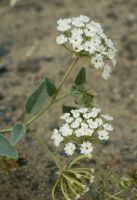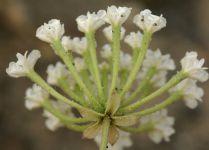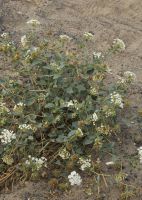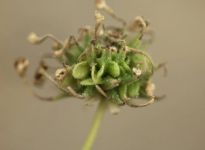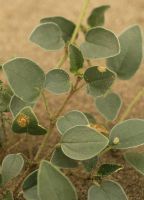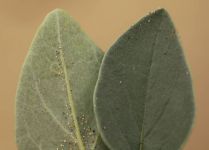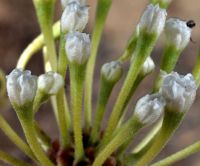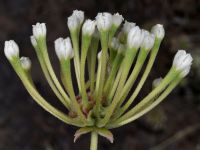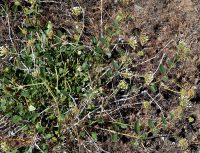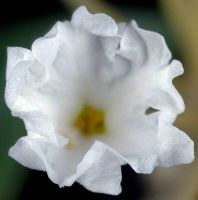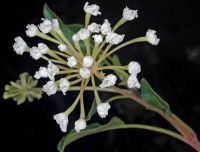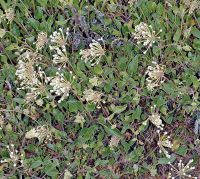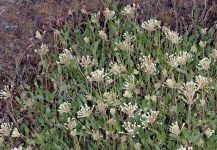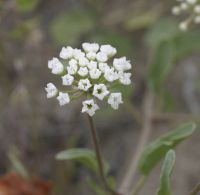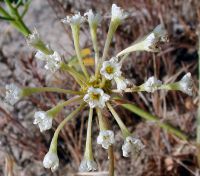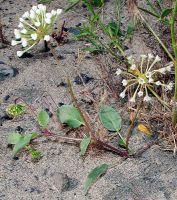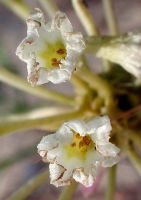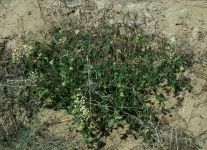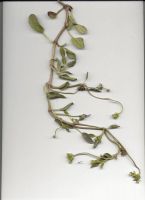Distribution: Occurring east of the Cascades crest in Washington; eastern Washington to southeastern Oregon, east to Montana and western Wyoming.
Habitat: Dunes and sandy soil at low elevations.
Flowers: May-October
Origin: Native
Growth Duration: Perennial
Conservation Status: Not of concern
Pollination: Bumblebees, flies, moths
Herbaceous perennial from a woody taproot, somewhat glandular, finely puberulent to glabrous, with numerous decumbent but erect-tipped branches 2-7 dm. long.
Leaves opposite, pale greenish, rather fleshy, the blade lanceolate to deltoid, 2-5 cm. long, abruptly narrowed to a petiole slightly shorter to 3 times as long.
Flowers perfect, in heads on peduncles that exceed the leaves, subtended by 5 narrowly oblong to oblong-oblanceolate, membranous, whitish involucral bracts 1.5-4 mm. wide and 7-10 mm. long; perianth densely puberulent to glabrous, white, with a narrow tube 12-20 mm. long and 5 flaring, white lobes 7-10 mm. broad; corolla none; stamens 4-5, included; style 1, included.
Achene 8-11 mm. long, puberulent, wingless or with 5 thin, firm wings, the 2 sides closely appressed to each other, broader than the body of the fruit, narrowed to the base.
Publication: Bot. Mag. 56: plate 2879. 1829.
-
var. mellifera – honey-scented sandverbena, white sand verbena
 Occurring east of the Cascades crest in Washington; eastern Washington to southeastern Oregon, east to Montana and western Wyoming.
Occurring east of the Cascades crest in Washington; eastern Washington to southeastern Oregon, east to Montana and western Wyoming.
PNW Herbaria: Specimen records of Abronia mellifera in the Consortium of Pacific Northwest Herbaria database
WA Flora Checklist: Abronia mellifera checklist entry
OregonFlora: Abronia mellifera information
E-Flora BC: Abronia mellifera atlas page
CalPhotos: Abronia mellifera photos

